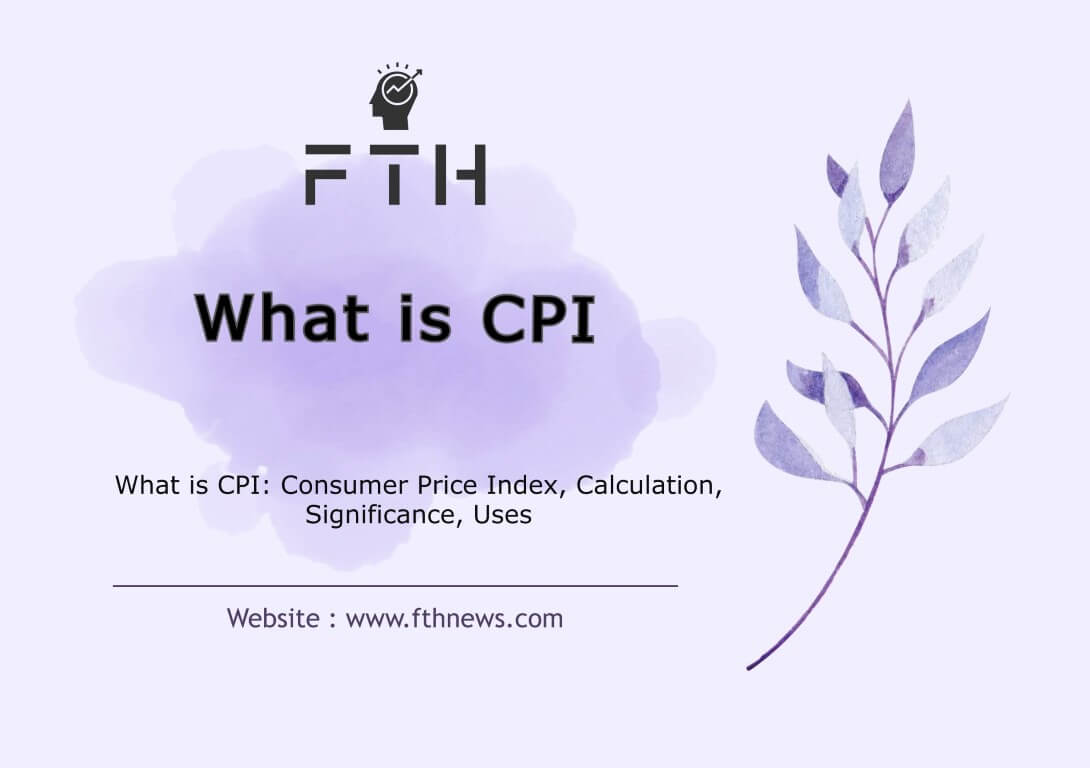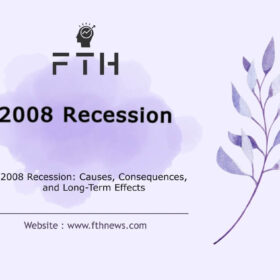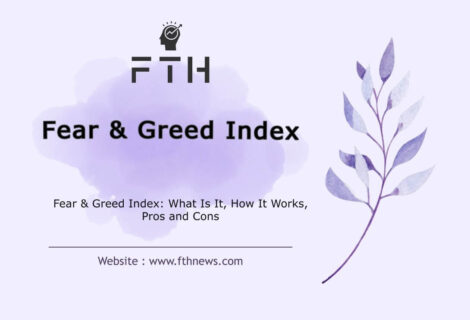
What is CPI: Consumer Price Index, Calculation, Significance, Uses
In the ever-evolving landscape of economics, the Consumer Price Index (CPI) stands as a linchpin for measuring inflation and assessing shifts in the cost of living.
This in-depth guide is designed to unravel the complexities surrounding the CPI, shedding light on its critical importance, the intricacies of its calculation methods, and the profound impact it has on shaping economic decisions.
What is CPI? Consumer Price Index
The Consumer Price Index (CPI) stands as a fundamental and widely-utilized economic indicator, acting as a barometer for gauging the average fluctuations in prices paid by consumers for goods and services over a specific period.
This pivotal metric serves as an indispensable tool for comprehending the intricacies of inflation, laying the groundwork for the formulation of diverse economic policies and critical decision-making processes.
The CPI essentially acts as a compass, guiding policymakers, businesses, and individuals through the nuanced landscape of economic dynamics by providing insights into the ever-changing cost structures within an economy.
How is CPI Calculated?
A nuanced understanding of the CPI calculation process is essential for interpreting its implications accurately. The index is meticulously derived by comparing the current prices of a carefully curated basket of goods and services with their prices in a predetermined base year. This basket is thoughtfully designed to mirror the typical spending habits of an average household, encompassing a diverse range of essential items.
The formula for calculating CPI is expressed as:
CPI=Cost of Basket in Base Year / Cost of Basket in Current Year ×100
This formula encapsulates the ratio of the current cost of the basket to its cost in the base year, effectively normalizing the changes in price over time. The resulting index, expressed as a percentage, offers a comprehensive snapshot of the overall price movements in the economy.
It serves as a powerful gauge to assess the purchasing power of a currency, providing valuable insights into economic trends and helping stakeholders make informed decisions amidst the dynamic ebb and flow of market forces.
Significance of CPI:
The Consumer Price Index (CPI) transcends mere statistical representation; its impact reverberates in the real world, influencing individuals, businesses, and policymakers alike. Delving into its multifaceted significance, here are key aspects that underscore its importance:
Inflation Measurement:
At its core, the CPI stands as a primary instrument for measuring inflation. Central banks and policymakers meticulously scrutinize CPI data to craft and adjust monetary policies, ensuring the maintenance of price stability within the economy.
The CPI acts as a compass, guiding decision-makers through the intricate landscape of inflationary trends.
Cost of Living Adjustment:
The CPI’s influence extends to the microeconomic level, playing a pivotal role in wage and benefit adjustments. Many compensation structures are intricately tied to CPI fluctuations.
Understanding the nuanced trends within the CPI enables individuals and businesses to make judicious decisions about budgeting and financial planning, ensuring alignment with the ever-evolving cost of living.
Economic Indicator:
Functioning as a vital economic indicator, the CPI exerts a considerable impact on broader economic strategies. It significantly shapes investment strategies, informs pivotal business decisions, and even molds government policies.
For investors, a rising CPI may signal inflation, prompting considerations about interest rates and the composition of investment portfolios. The CPI, therefore, becomes a strategic tool for navigating the complex interplay of economic forces.
By comprehending the multifaceted role of the CPI, stakeholders can wield this economic metric effectively, gaining insights that transcend mere statistical analysis. Its implications ripple through various facets of the economic landscape, making the CPI a crucial compass for individuals navigating their financial plans, businesses charting strategies, and policymakers steering the course of economic stability.
CPI Challenges and Criticisms
While the Consumer Price Index (CPI) stands as a cornerstone in economic analysis, it does not elude scrutiny and faces criticism from various quarters. The widespread use of CPI notwithstanding, there are nuanced challenges that warrant consideration:
Technological Advancements:
One prominent critique revolves around the CPI’s purported inadequacy in accounting for rapid technological advancements. As innovations unfold at an unprecedented pace, some argue that the index may fall short in accurately reflecting the true value of technological goods and services. The dynamic nature of technological progress poses a perpetual challenge in aligning the CPI with the evolving landscape of consumer preferences and the intrinsic value of technological innovations.
Demographic Disparities:
Another layer of criticism stems from the acknowledgment that different demographic groups may experience inflation disparately. The CPI, while comprehensive, might not fully capture the diverse spending patterns and consumption habits across various socioeconomic strata. This limitation raises concerns about potential disparities in the impact of inflation on different segments of the population, highlighting the need for nuanced adjustments to ensure a more equitable representation.
Quality Changes:
Critics also point to challenges related to quality changes in goods and services. The CPI may not adequately account for improvements in the quality of products over time, potentially leading to an overestimation of inflation. As industries continuously enhance their offerings, accurately gauging the value consumers derive from these improvements becomes an intricate task for the CPI.
Substitution Bias:
The CPI is based on a fixed basket of goods and services, assuming constant consumption patterns. However, critics argue that this approach may introduce a substitution bias, as consumers may alter their spending habits in response to changing prices. The fixed nature of the basket may not fully capture these shifts, impacting the accuracy of inflation measurements.
Recognizing these challenges is integral to a nuanced understanding of the CPI’s limitations. Addressing these concerns involves ongoing refinement and adaptation of measurement methodologies, ensuring that the CPI remains a reliable indicator in an ever-evolving economic landscape. While criticisms exist, the CPI continues to be a foundational tool, albeit one that requires constant vigilance and refinement to maintain its relevance and accuracy.
Why is CPI Important for Traders?
The Consumer Price Index (CPI), colloquially known as “headline inflation” within financial markets, carries profound significance for traders, especially those active in currency markets. The pivotal role of the CPI stems from its influence on shaping the monetary policy decisions of central banks, making it a linchpin in the intricate dance of global currencies.
Guiding Monetary Policy:
In essence, the CPI acts as a compass for central banks navigating the turbulent seas of inflation. These institutions, such as the Federal Reserve and the Bank of Japan, meticulously analyze CPI data to discern trends and fluctuations in consumer prices. The insights gleaned from the CPI serve as crucial inputs for central banks when formulating and adjusting monetary policies.
Interest Rates and Currency Values:
One of the primary tools in the central bank’s arsenal is interest rates. In response to CPI data, central banks may decide to raise or lower interest rates strategically. For instance, if inflation surpasses the targeted level, central banks might opt to raise interest rates to cool down economic activity and curb inflationary pressures. This, in turn, can influence the value of the national currency against others.
Global Currency Dynamics:
Traders in currency markets keenly watch CPI releases as they are integral to predicting how central banks might tweak interest rates. This anticipation of interest rate changes directly impacts currency values, creating opportunities for traders to make informed decisions in a dynamic and interconnected global market.
Market Sentiment and Risk Management:
Moreover, CPI data doesn’t merely offer insights into monetary policy; it also acts as a barometer of market sentiment. Traders often gauge CPI releases to assess the level of risk in the market. In times of high inflation, market participants may adopt a more risk-averse stance, seeking safe-haven assets. This interplay between inflation data and market sentiment is invaluable for traders implementing effective risk management strategies.
Digital Currencies and Inflation Hedging:
In the ever-evolving landscape of finance, the relationship between CPI and digital currencies is gaining prominence. Investors increasingly view digital currencies, such as Bitcoin, as a potential hedge against inflation. When traditional assets face devaluation due to high inflation, the appeal of digital currencies as a store of value tends to rise, influencing their demand and market value.
In essence, the CPI is not just a statistical measure; it is a dynamic force shaping the terrain of financial markets. Traders who understand its intricate dance with monetary policy, interest rates, and market sentiment can navigate the complexities of global currencies with greater foresight and precision. As the CPI continues to play a pivotal role in the financial ecosystem, traders remain vigilant, interpreting its signals to seize opportunities and manage risks in a rapidly changing economic landscape.
CPI Importance in Traditional Financial Markets:
Beyond its primary impact on currency markets, the Consumer Price Index (CPI) exerts a profound influence in traditional financial markets, acting as a guiding force for decision-makers across various sectors.
Policymakers’ Deliberations:
For policymakers, the CPI serves as a crucial benchmark in shaping economic strategies. The insights derived from CPI data inform decisions related to interest rates, fiscal policies, and overall economic stability. By understanding inflationary trends, policymakers can make informed choices to maintain a delicate balance between economic growth and price stability.
Brokerage Strategies:
Brokers, too, find CPI data invaluable in crafting investment strategies. The index’s close relationship with inflation offers valuable insights into market trends and risk management. Understanding how CPI fluctuations can impact asset values allows brokers to provide informed advice to clients, fostering a more resilient and adaptive investment approach.
Small Business Decision-Making:
In the realm of small businesses, CPI plays a vital role in decision-making processes. Entrepreneurs and small business owners rely on CPI data to anticipate changes in consumer behavior. By gauging potential shifts in spending patterns, these businesses can adjust their offerings, pricing strategies, and overall operational plans to align with economic realities.
Stock Market Performance:
The symbiotic relationship between the CPI and stock market performance is particularly noteworthy. Investors, whether institutional or individual, closely monitor CPI releases as a key factor influencing stock prices. The index’s impact on inflation and interest rates has a cascading effect on different sectors within the stock market, making CPI an indispensable consideration for those involved in traditional financial instruments.
CPI’s Role in Economic Forecasting:
Furthermore, CPI’s significance extends beyond immediate market considerations. Its historical data and trends are integral components in economic forecasting models. Analysts leverage CPI insights to project future economic conditions, aiding in long-term investment planning and risk mitigation.
Strategic Business Planning:
Small businesses, especially those operating in consumer-centric industries, can leverage CPI data for strategic planning. By anticipating how inflation may affect consumer spending, businesses can proactively adjust pricing structures, marketing approaches, and inventory management to navigate economic fluctuations successfully.
In conclusion, the Consumer Price Index is not confined to the realm of currency markets; its influence permeates traditional financial markets, offering a multifaceted lens through which decision-makers can navigate economic complexities. From shaping government policies to informing brokerage strategies and aiding small business planning, the CPI emerges as a critical tool for those seeking to make informed decisions in the ever-evolving landscape of traditional financial instruments. As the CPI continues to play a pivotal role in shaping economic strategies, its nuanced impact underscores its irreplaceable importance in the broader financial ecosystem.
Types of Consumer Price Indexes:
The realm of Consumer Price Indexes is far from uniform, encompassing a diverse array of indices designed to cater to specific demographics and purposes. Understanding the nuances of these indices is crucial for obtaining a comprehensive view of inflationary trends. Let’s delve into some of the key types:
1. CPI-U (Consumer Price Index for All Urban Consumers):
- Demographic Coverage: This index casts a wide net, encompassing approximately 93% of the U.S. population. It reflects the spending habits of both urban professionals and non-professionals, offering a broad perspective on consumer price changes.
2. CPI-W (Consumer Price Index for Urban Wage Earners and Clerical Workers):
- Targeted Audience: Unlike the CPI-U, the CPI-W zeroes in on a specific demographic—urban wage earners and clerical workers. This index is often utilized for cost-of-living adjustments (COLA) to federal benefits, providing tailored insights into the inflationary experiences of this particular group.
3. Core CPI:
- Exclusion of Volatile Items: Core CPI takes a more refined approach by excluding volatile items such as food and energy prices. This exclusion is intended to offer a clearer picture of underlying inflation trends, making it a valuable metric for assessing long-term economic conditions.
4. CPI-E (Consumer Price Index for the Elderly):
- Tailored for Seniors: Recognizing the unique spending patterns of seniors, CPI-E is specifically designed to measure inflation as experienced by the elderly population. This index considers the basket of goods and services consumed by individuals aged 62 years and older.
5. Regional and City-Specific CPIs:
- Localized Insights: In addition to national indices, various regions and cities have their own CPIs. These localized indices provide granular insights into the inflationary dynamics of specific areas, allowing for targeted analyses and policy adjustments at a regional level.
6. Producer Price Index (PPI):
- Supply-Side Perspective: While not strictly a consumer index, the Producer Price Index (PPI) offers insights from the supply side. It measures the average change over time in the selling prices received by domestic producers for their goods and services. PPI trends can have downstream effects on consumer prices.
7. International CPIs:
- Global Perspectives: Many countries have their own CPIs, each tailored to their unique economic landscapes. International organizations also compile global inflation indices, offering a comparative lens for understanding inflation trends on a global scale.
8. Medical Care CPI:
- Healthcare Focus: Recognizing the significant impact of healthcare costs on consumer budgets, the Medical Care CPI hones in on changes in the prices of medical services, prescription drugs, and other healthcare-related expenses.
Understanding the diversity of Consumer Price Indexes is essential for analysts, policymakers, and businesses alike. Each index serves a distinct purpose, allowing for a nuanced examination of inflationary trends within specific demographics, regions, and economic sectors. This intricate web of indices collectively contributes to a more comprehensive understanding of the multifaceted nature of inflation.
How Is the CPI Used?
The Consumer Price Index (CPI) is not merely a static economic metric; it is a dynamic tool employed in various capacities, offering critical insights into the ever-evolving landscape of consumer prices. Here’s a detailed exploration of how the CPI is utilized:
1. Monetary Policy Formulation:
- Role in Central Banking: Central banks, entrusted with the responsibility of maintaining economic stability, closely scrutinize CPI data to inform their monetary policy decisions. The index serves as a compass, guiding central banks in adjusting interest rates and implementing measures to control inflation and stimulate economic growth.
2. Inflation Measurement and Comparison:
- Benchmark for Inflation: The CPI stands as the benchmark for measuring inflation, providing a snapshot of the average change in prices for a basket of goods and services. Policymakers, economists, and investors leverage CPI data to assess inflationary trends over time and make informed comparisons between different periods.
3. Cost-of-Living Adjustments (COLA):
- Federal Benefits and Contracts: The CPI-W, tailored for urban wage earners and clerical workers, plays a pivotal role in determining cost-of-living adjustments (COLA) for federal benefits and contracts. By understanding how the cost of living is changing, adjustments are made to ensure that benefits keep pace with inflation.
4. Consumer Behavior and Decision-Making:
- Insight into Consumer Spending: Businesses and retailers closely monitor CPI trends to anticipate shifts in consumer behavior. As the CPI reflects changes in the prices of goods and services, it offers valuable insights into how spending patterns may evolve. This, in turn, aids businesses in making strategic decisions related to pricing, inventory management, and marketing.
5. Real Wage Calculations:
- Determining Real Earnings: The CPI is instrumental in calculating real wages, allowing individuals and policymakers to assess how changes in prices impact actual purchasing power. By factoring in inflation, real wages provide a more accurate picture of an individual’s standard of living over time.
6. Investment Strategies:
- Impact on Investment Decisions: Investors keenly watch CPI releases to gauge the potential impact on interest rates, currency values, and various sectors of the stock market. Anticipating how inflation may evolve helps investors make informed decisions to optimize their portfolios.
7. Economic Forecasting:
- Long-Term Planning: Economic analysts use CPI data as a fundamental component in forecasting models. Understanding inflationary trends aids in long-term economic planning, allowing businesses and policymakers to anticipate challenges and opportunities on the horizon.
8. Social Security and Pension Adjustments:
- Ensuring Income Adequacy: Social Security benefits and pension adjustments are often linked to CPI data. This linkage ensures that retirees and pensioners experience adjustments that align with changes in the cost of living, contributing to income adequacy in their post-employment years.
In essence, the CPI is a versatile and indispensable economic tool, influencing decisions at various levels of society. Its comprehensive coverage, drawn from approximately 80,000 monthly price quotes across diverse sectors, underscores its role as a reliable barometer of economic health. From guiding central banks in formulating policies to informing individual consumer choices, the CPI’s multifaceted utility solidifies its status as a cornerstone in economic analysis and decision-making.
CPI Categories:
The Consumer Price Index (CPI) is a rich and intricate tapestry that captures the essence of consumer spending, reflecting the dynamic interplay of various goods and services. Let’s delve into the diverse categories that constitute this economic masterpiece, each contributing a unique thread to the overall fabric of inflationary trends.
1. Food and Beverages:
- Essentials of Daily Living: This category encompasses the staple of human existence—food and beverages. From the cost of groceries to dining out, fluctuations in this segment provide crucial insights into the foundational elements of consumer spending.
2. Housing:
- Shelter Costs and Beyond: Perhaps the most substantial thread in the CPI tapestry, housing includes rents, mortgage costs, and utilities. Given its weight in the index, housing expenditure is a key determinant in assessing overall changes in consumer prices.
3. Apparel:
- Fashion and Functionality: The apparel category encapsulates clothing and footwear expenditures. Changes in fashion trends, manufacturing costs, and consumer preferences all contribute to the dynamic shifts observed in this segment.
4. Transportation:
- Navigating the Roads and Skies: Transportation covers a broad spectrum, ranging from the price of gas and vehicle maintenance to public transportation costs. As a reflection of mobility expenses, changes in this category offer valuable insights into the economic pulse.
5. Medical Care:
- Healthcare Expenditure: The medical care category encompasses healthcare services, prescription drugs, and medical supplies. As health-related costs continue to be a significant aspect of consumer budgets, fluctuations in this category deeply influence overall CPI trends.
6. Recreation:
- Leisure and Entertainment: Recreation reflects spending on leisure activities, including items such as gym memberships, electronics, and recreational equipment. Changes in this category mirror shifts in consumer preferences for entertainment and leisure pursuits.
7. Education and Communication:
- Investing in Knowledge and Connectivity: Education and communication cover the costs associated with educational services, tuition, and communication services. As education and technology become integral facets of modern life, tracking changes in this category unveils evolving consumer priorities.
8. Other Goods and Services:
- Assorted Expenditures: This catch-all category captures a range of miscellaneous goods and services that don’t neatly fit into the aforementioned groups. It serves as a flexible container, accommodating diverse consumer spending patterns.
Collectively, these eight categories form the backbone of the CPI, offering a panoramic view of consumer price changes. By meticulously categorizing expenditures into these distinct threads, the CPI provides policymakers, businesses, and individuals with a nuanced understanding of the factors influencing inflation. The CPI’s ability to weave together these diverse elements underscores its significance as a comprehensive and reliable economic indicator, allowing for informed decision-making in the ever-evolving landscape of consumer behavior.
Leveraging CPI Data for Informed Decision-Making
The Consumer Price Index (CPI) isn’t just a collection of numbers; it’s a powerful tool that offers invaluable insights into consumer behavior, market trends, and economic dynamics. Let’s explore how CPI data can be effectively utilized to inform various aspects of decision-making:
1. Measuring Consumer Purchasing Power:
- Inflation, even when adhering to the Federal Reserve’s targeted 2% yearly increase, significantly influences consumer behavior. Rapid inflation tends to make consumers more risk-averse, diminishing their purchasing power and making borrowing more challenging. Understanding CPI data allows individuals and businesses to gauge the erosion of consumer purchasing power and adapt their strategies accordingly.
2. Prediction of Stock Market Trends:
- High inflation rates often act as a brake on economic activity, slowing down businesses and prompting investors to reevaluate their positions. As inflation rises, investors may withdraw capital from the market, seeking refuge in essential needs or savings. This shift in investor sentiment can lead to devaluation in many stocks. Monitoring CPI trends enables investors to anticipate market movements and adjust their portfolios accordingly.
3. Specific Business Decisions:
- With CPI data regionalized in some countries, businesses gain valuable insights into local market conditions. The CPI’s eight main categories, including energy, transportation, and food, offer nuanced perspectives for businesses making strategic decisions. By understanding how changes in consumer prices affect different sectors, businesses can tailor their strategies to capitalize on emerging opportunities and mitigate risks.
4. Determining Investment Strategy:
- Traders harness CPI data to navigate the complexities of the market landscape. By analyzing CPI trends across industry classifications, time frames, and geographic regions, traders can develop robust risk management strategies. This comprehensive view enables traders to make informed investment decisions, optimizing their portfolios for long-term success.
In essence, CPI data serves as a compass, guiding individuals, businesses, and investors through the ever-changing currents of the economy. By leveraging CPI insights, decision-makers can anticipate shifts in consumer behavior, predict market trends, and make strategic choices that drive success in an increasingly dynamic economic environment. As the CPI continues to evolve, its role as a cornerstone of informed decision-making remains unwavering, empowering stakeholders to navigate uncertainties with confidence and foresight.
CPI Economic Performance Indicator
The Consumer Price Index (CPI) transcends its role as a mere tool for monetary policy; it stands as a robust barometer that unveils the intricate dynamics of an economy’s performance. Let’s delve into the multifaceted ways in which CPI serves as a compass for gauging economic health:
1. Consumer Purchasing Power:
- Erosion of Financial Strength: Sharp rises in inflation, as illuminated by the CPI, can significantly erode the purchasing power of consumers. The relentless march of prices upward diminishes what individuals can afford, altering spending habits and leading to a decrease in overall savings. Understanding this impact is crucial for individuals and businesses alike as they recalibrate financial strategies in response to changing economic conditions.
2. Interest Rates and Borrowing Dynamics:
- Central Bank Interventions: CPI data plays a pivotal role in shaping the decisions of central banks. When faced with mounting inflationary pressures, central banks may opt to raise interest rates as a measure to cool down economic activity. This strategic move, while combating inflation, often results in decreased borrowing. As interest rates climb, the cost of borrowing rises, prompting individuals and businesses to reassess their lending and spending behaviors. This ripple effect, orchestrated by CPI-driven interest rate adjustments, can have a profound impact on the overall Gross Domestic Product (GDP) of a country.
3. GDP Impact:
- Borrowing, Spending, and Economic Activity: The interconnected dance between inflation, interest rates, and borrowing directly influences a nation’s GDP. As central banks respond to CPI-driven inflation by adjusting interest rates, the subsequent reduction in borrowing and spending can lead to a slowdown in economic activity. This nuanced relationship underscores the delicate balance that policymakers must strike to ensure a harmonious economic environment. By interpreting CPI trends, decision-makers can anticipate shifts in GDP, providing essential insights for crafting effective economic strategies.
4. Realignment of Economic Priorities:
- Strategic Adjustments: CPI, acting as a compass for economic health, prompts individuals, businesses, and policymakers to realign their priorities. In times of inflationary pressures, the focus shifts towards prudent financial management, cost containment, and adaptive economic policies. The insights derived from CPI data enable stakeholders to navigate the evolving economic landscape with foresight and precision.
In essence, the CPI is a dynamic lens that unveils the broader economic narrative. Beyond being a measure of inflation, it serves as an indispensable economic performance indicator, revealing the impact of price movements on consumer behavior, interest rates, and the overall trajectory of a country’s GDP. As the CPI continues to play a pivotal role in economic analysis, its nuanced insights guide decision-makers in steering their nations through the intricate currents of inflation and economic dynamics.
What is CPI in Real Estate
In real estate, CPI stands for “Consumer Price Index,” and it is a crucial economic indicator used to measure inflation and its impact on various sectors, including the real estate market. The Consumer Price Index tracks changes in the average prices paid by consumers for a basket of goods and services over time. Here’s how CPI is relevant in the context of real estate:
Rent Increases:
CPI is often used to determine rent increases in leases. Lease agreements may include a clause that ties rent adjustments to changes in the Consumer Price Index. This helps landlords and tenants account for inflation and maintain a fair rental value over time.
Inflation Hedge:
Real estate is considered a traditional hedge against inflation. As the CPI measures inflation, real estate investments, especially property ownership, can act as a hedge by potentially appreciating in value over time in response to inflationary pressures.
Interest Rates and Mortgage Costs:
Central banks may use CPI data to make decisions about interest rates. Changes in interest rates can impact mortgage costs, influencing the affordability of real estate purchases. Investors and homebuyers often monitor CPI trends to anticipate potential shifts in interest rates.
Property Valuation:
CPI can indirectly influence property valuation. Inflationary pressures may lead to increased construction costs, affecting the replacement cost of properties. Additionally, Consumer Price Index trends can impact overall economic conditions, influencing demand for real estate.
Investment Decision-Making:
Real estate investors consider Consumer Price Index data as part of their decision-making process. Understanding how inflation may impact property values, rental income, and financing costs is crucial for making informed investment decisions in the real estate market.
Lease Agreements and Commercial Real Estate:
In commercial real estate, long-term lease agreements may include provisions tied to CPI increases. This helps both landlords and tenants account for changes in the cost of living and maintain fair and equitable lease terms.
In summary, CPI plays a vital role in the real estate sector by influencing various aspects such as rent adjustments, property valuation, mortgage costs, and investment decision-making. Monitoring Consumer Price Index trends is essential for stakeholders in the real estate market to navigate economic conditions and make informed choices.
Conclusion:
In conclusion, the Consumer Price Index is a fundamental tool for assessing economic health and making informed financial decisions. This guide has aimed to provide a clear understanding of CPI, its calculation methods, significance, and potential criticisms. By staying informed about CPI trends, individuals and businesses can navigate an ever-changing economic landscape more effectively.
Remember, staying updated on CPI and its implications is essential for making informed financial decisions in both personal and professional spheres. As you delve deeper into the world of economics, the CPI will continue to be a valuable compass, guiding you through the complex terrain of inflation and cost dynamics.
FAQ
Consumer Price Index, is a measure that tracks the average change in prices of goods and services over time, reflecting inflation’s impact on consumer expenses.
Yes, Consumer Price Index is a key indicator of inflation. It measures how the cost of a basket of common goods and services changes, indicating the overall rise or fall in prices.
It depends. A moderate Consumer Price Index is often ideal, indicating a stable economy. Extremely high CPI can lead to economic challenges, while very low CPI might suggest deflationary risks.
Consumer Price Index is calculated by comparing the current cost of a set basket of goods and services to their cost in a base year. The formula involves dividing the current cost by the base year cost and multiplying by 100.














